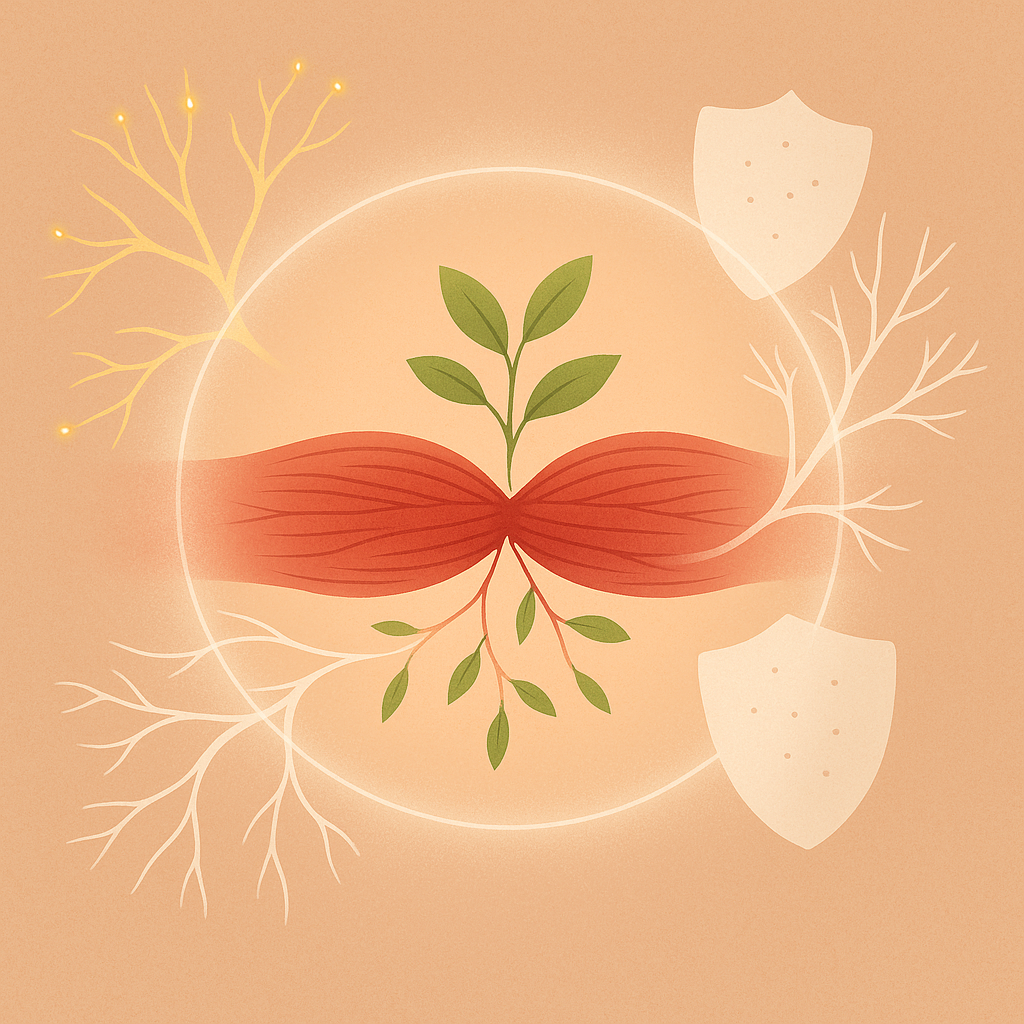
Written by OneGuild Institute
For people with diabetes, the stakes of wound healing are high. Chronic wounds — particularly in the skin and muscle — are not just slow to close; they are prone to infection, inflammation, and in some cases, amputation. Inflammation that won’t resolve. Nerve damage that won’t heal. For scientists, these challenges have long felt like biological dead ends.
But what if the way forward isn’t through the immune system alone — but through the nervous system?
That’s the question driving the work of Dr. Yen-Zhen Lu of Monash University in Australia, whose recent research investigates a novel pathway to healing: the role of nociceptive sensory neurons in regulating immune response and tissue regeneration. Her approach? Harnessing a small neuropeptide — CGRP (calcitonin gene-related peptide) — and engineering it into a targeted therapeutic tool.
Her research recently earned her the Peter Sheehan Young Innovator Award, which honors early-career scientists advancing bold innovation in tissue regeneration, diagnostics, and diabetic limb preservation.
Nociceptive neurons are best known for transmitting pain. But they also release signaling molecules that interact with immune cells in sites of injury. In Lu’s study, CGRP was shown to shift the behavior of neutrophils and monocytes/macrophages toward a pro-repair, anti-inflammatory state, fostering an environment more conducive to healing.
What makes this especially promising is its applicability to diabetic wound models — where inflammation is persistent and nerve signaling is often disrupted.
To translate this discovery into something therapeutic, Lu and her team engineered an enhanced version of CGRP (called eCGRP) designed for localized delivery and sustained activity. Rather than circulating systemically — which could lead to unwanted side effects like migraines — eCGRP stays where it’s needed, targeting skin and muscle injury sites.
In a diabetic mouse model (Leprdb/db), local application of eCGRP resulted in faster wound closure, improved muscle regeneration, and a significant reduction in pro-inflammatory markers.
This points to a powerful new strategy: using neuroimmune signaling as a way to modulate healing — especially in tissues where repair has been historically impaired by chronic disease.
At OneGuild Institute, we consider this a striking example of innovation in context — where fundamental science opens the door to translational opportunity. The innovation isn’t only in the molecule. It’s in the thinking: a reframing of what nerve cells can do, and how therapeutic design can be shaped by biology’s own repair systems.
Whether or not eCGRP advances into clinical use, this work shines a light on new ways of approaching chronic wound care — through immune rewiring, targeted delivery, and a deeper understanding of the body’s built-in repair mechanisms.
And in a field where far too many therapies fall short, that kind of shift matters.
▶️ Watch Yen-Zhen Lu explain the science behind this work in her own words.
__________________________________________
➝ Read Next: Honoring Vision, Elevating Voices: The Peter Sheehan Young Innovator Award